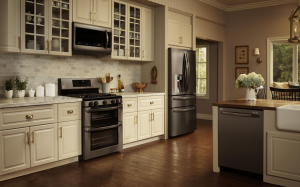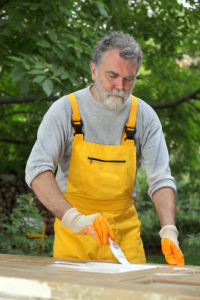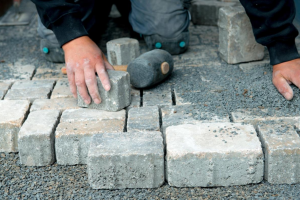 (BPT) – Some kitchen design trends fade as quickly as they come in – tile countertops, naked windows or avocado-hued appliances may come to mind. Other trends, however, are so deeply rooted in good design that they’re destined to become timeless style statements – and enhance your kitchen with a look you’ll love as much in a decade as you do the first moment you see it.
(BPT) – Some kitchen design trends fade as quickly as they come in – tile countertops, naked windows or avocado-hued appliances may come to mind. Other trends, however, are so deeply rooted in good design that they’re destined to become timeless style statements – and enhance your kitchen with a look you’ll love as much in a decade as you do the first moment you see it.
Those are the trends homeowners should watch for in 2016 and incorporate into their kitchen upgrade plans, says stylist and designer Emily Henderson, season five winner of HGTV’s “Design Star.” Given nearly nine in 10 homeowners plan to renovate their homes in the near future with half of them planning to do so within the next year, according to a survey by LG Electronics, being armed with the right information will help make those renovations a success.
“Timeless design has an enduring aesthetic that seamlessly complements a range of infinite kitchen styles and colors,” Henderson notes. “They create looks and enhance functionality in ways that will pay off for homeowners for years to come.”
Henderson points to five design trends to watch in 2016:
Open It Up
Areas that seem small or cramped have never been a staple in homes. Look for design enhancements that create a more open atmosphere, like open shelving or glass-front cabinets, which appear contemporary, sleek and functional. Open storage encourages organization, cuts clutter and eliminates chaos since the contents are always on display. They also provide a great way for homeowners to display their pretty dishware, Henderson notes.
Stainless Steel Revamp
Stainless steel appliances have long been the standard of elegance in modern kitchens. “It’s hard to imagine improving on such near-perfection, but LG Electronics’ new Black Stainless Steel Series of appliances have done just that,” Henderson says. The new finish from LG adds luster and warmth to the satin-smooth finish and durability of traditional stainless steel. The effect is warm and sophisticated, meshing perfectly with a range of kitchen design styles and colors. “It only helps that the finish is smudge-resistant, which is perfect for a mom like me who likes to keep things clean and pretty, especially with little ones around,” Henderson notes.
LG Electronics’ new Black Stainless Steel Series of appliances have done just that,” Henderson says. The new finish from LG adds luster and warmth to the satin-smooth finish and durability of traditional stainless steel. The effect is warm and sophisticated, meshing perfectly with a range of kitchen design styles and colors. “It only helps that the finish is smudge-resistant, which is perfect for a mom like me who likes to keep things clean and pretty, especially with little ones around,” Henderson notes.
Let Your Personality Shine
Modern designs and the sheer number of home décor products make it easier than ever to personalize virtually any design theme. You can add a dash of your personality to your kitchen decor in many ways. Use decorative accents on counters and focus on underscoring a theme you love in the rest of the house, for instance. A lived-in look with touches of style adds life to the space. “I love vintage salt and pepper shakers, brass or wooden utensils, glass canisters, wooden bowls, enamel pots and even vintage cookbooks,” Henderson says. “You can find so many ways to add personal flair to a design, and it’s a sensibility that will never go out of style.”
Contrast is Good
Some combinations will always be on trend, and Henderson predicts more of them will be showing up in kitchen design in 2016. “Black and white, metallics like brass, gold or copper paired with natural and wooden touches – these combos will never tire,” she says. “They can be used alone or in combination with other elements. You really can’t go wrong with any of them.”
In celebration of 2016 design trends, you have a chance to win a suite of LG Black Stainless Steel Series kitchen appliances, $25,000 and a design consultation with Henderson to completely make over your kitchen. Now through Jan. 29, 2016, create your own kitchen design Pinterest board inspired by the black stainless steel finish and submit it to the contest. Visit HGTV.com/LGContest for contest details and how to enter.
No purchase necessary to participate in the contest. The contest is open to legal residents of the 48 contiguous United States and District of Columbia, age 21 or older. Void where prohibited. Contest ends at 5 p.m. EST on Jan. 29, 2016. For full official rules, visit www.hgtv.com/LGcontest. The contest is sponsored by LG Electronics U.S.A., Inc., 1000 Sylvan Ave., Englewood Cliffs, New Jersey 07632.







